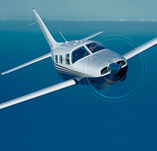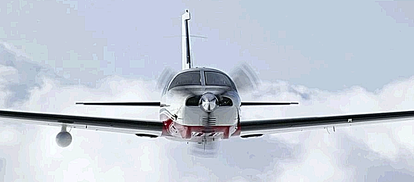
PA46 Instructor Development Program
Instructor training is designed to transition you safely and comfortably into the role of Instructor in the Piper PA46 from your prior high-performance, piston, single-engine aircraft instructor experience. Even if you have been teaching in PA46 Aircraft there is much to be gained by learning this disciplined, procedural approach with the proper use of checklists flows, memory items and SOP for single-pilot operations.
The following materials are provided with the Instructor transition program:
- A copy of the PA46 Standard Operating Procedures
- Copies of all the pilot information manuals (PIM) for your aircraft
- Access to the PA46 Training Provider Resource website.
The two-day performance-based ground only training program is provided when and where you choose. It presumes you are rated and current for instrument flight, have at least 500 hours PIC time, 250 hours Flight Instruction given, 50 hours instrument time and have reviewed the AFM; however, this is not required.It is designed to prepare the career oriented flight instructor to offer ground instruction and prepare for mentoring as a PA46 flight instructor.
Training Course Outline
Introduction to Systems and Limitations: (4 hours)
Each aircraft system is reviewed from a pilot’s perspective with strategies for proper use. The purpose of the systems overview is to help you understand how each system will perform in a given situation. Normal and abnormal situations are discussed. The systems include: aircraft general, engine/propeller, fuel, electrical, landing gear/brakes, flight controls, environmental systems, weight and balance, aircraft performance, emergency procedures, flight director/autopilot, flight instruments, EFIS, weather avoidance equipment, autopilot operations, cabin pressure system, anti-ice and de-ice systems, aeronautical decision making (ADM) and risk management (RM).

Cockpit Procedures Training (CPT) (4 hours):
Flight Review / IPC and Systems Review (4 hours):

Completion Standards
Completion standards are in accordance with FAA Practical Test Standards for the ATP rating. This level of proficiency will make you a safer, more effective pilot instructor. Upon successful completion, you will receive a Certificate of Completion and an endorsement for high altitude operation. If standards are not met in the time allotted, we will formulate a strategy for getting you to the required level of proficiency and develop a supplemental training schedule that is likely to be successful for you.
This course is offered at the location(s) of your choice worldwide. It requires that you be currently licensed by the FAA (or the National Aviation Authority of your country) to fly airplane single engine land (ASEL) aircraft.
Excellent training doesn’t take any longer or cost any more. Here are ten things you should consider before choosing your PA46 training and related service provider.
Professional Association of PA46 Instructors
About PAPI
PAPI Mission Statement: Safety by Way of Excellent Training
Objective
I – Recruit, screen, train, and accredit career oriented flight instructors in a manner which will significantly reduce the severity and frequency of PA46 accidents and better prepare the flight instructor for autonomous operation toward this goal.
II – Develop specific training programs and materials to support PAPI certified schools and instructors to include marketing support.
III – Provide continuing education and training to participating members.
Methodology
PAPI knows that, at the time of this writing, the general aviation (GA) community flies 20% of the total hours flown in the US, but it is responsible for 80% of US accidents.
PAPI knows that the vast majority of these accidents (70%) are pilot error.
PAPI knows that the vast majority (80%) of these accidents are adjudicated by the NTSB to the following categories:
- Stall/Spin
- CFIT (controlled flight into terrain)
- Thunderstorm encounters
- Air frame icing
PAPI recognizes the enormous role of errors of omission (EOs) caused by distraction in these accidents. PAPI acknowledges the unique challenges of training the general aviator who tends to:
- Fly less often than professional pilots
- Train less often than professional pilots
- Fly as single-pilot
- Operate without the procedural discipline inculcated in pro pilot operations
- PAPI recognizes the need for specificity in the GA training environment by way of training in the owner/pilot’s aircraft.
- PAPI recognizes the additional risks inherent in aircraft based training (ABT) and is prepared to mitigate this risk with the proper use of checklists, flows memory items and Standard Operating Procedures (SOP).
PAPI endeavors to reduce the general aviation accident rate by specifically addressing the four causal factors listed above through the systematic application of a well-vetted, disciplined, procedural approach to training.
PA46 Instructor Certifications Offered
- Ground Instructor
- Flight Instructor
- Senior Flight Instructor
- Master Flight Instructor
- Course Director
